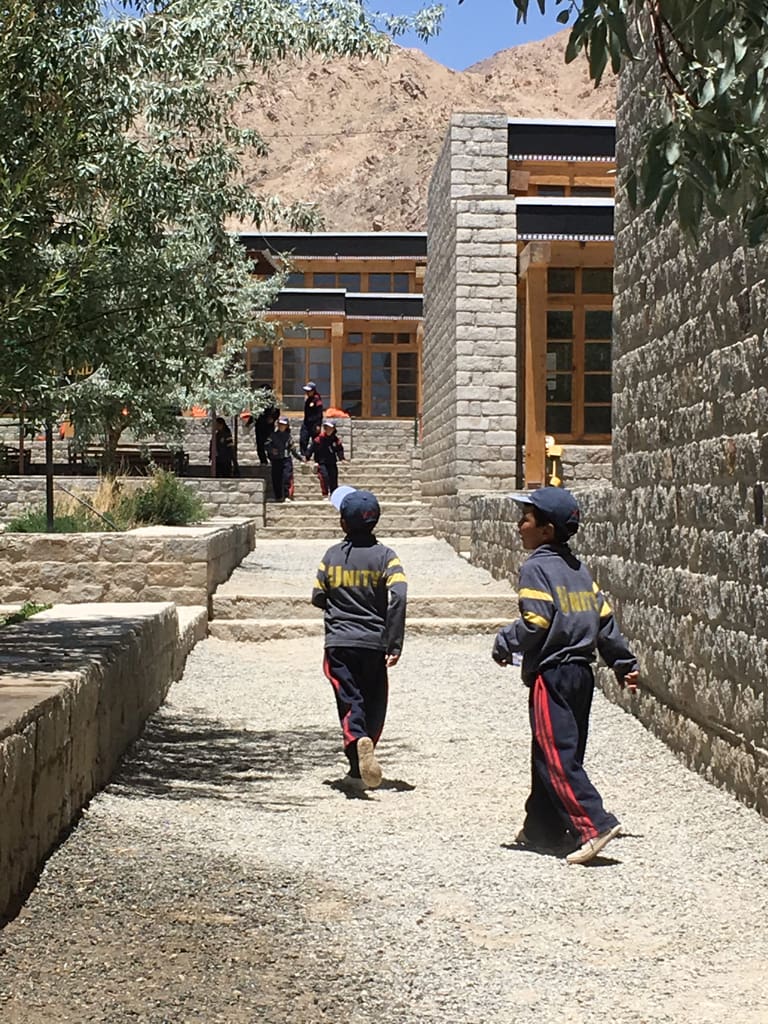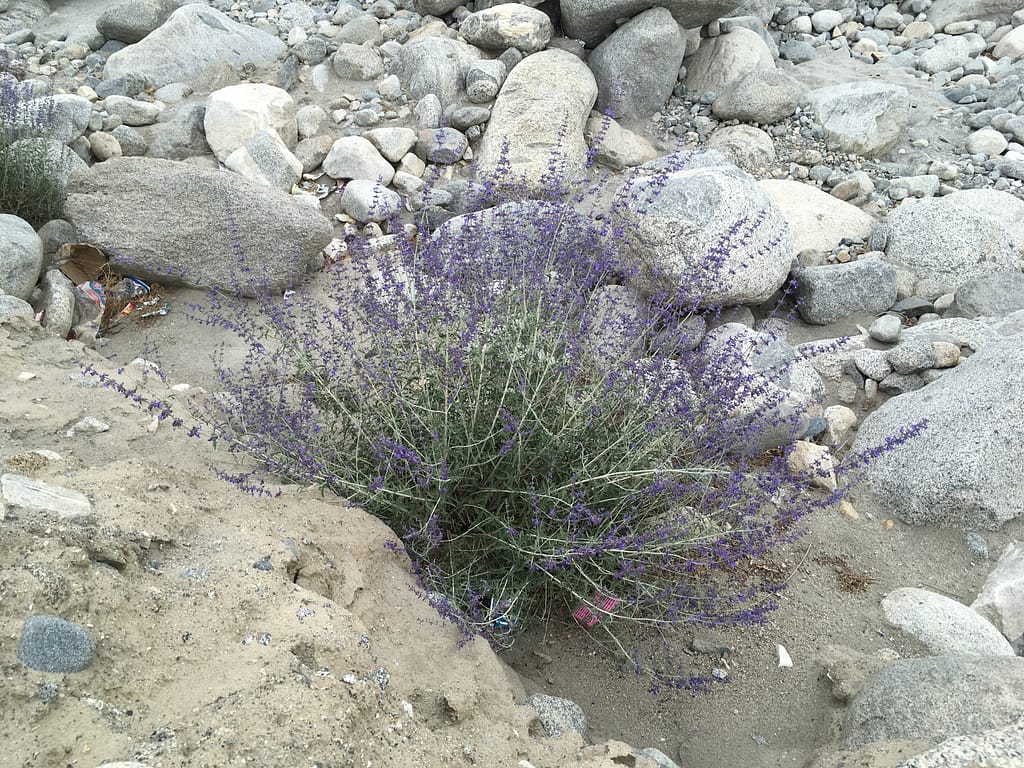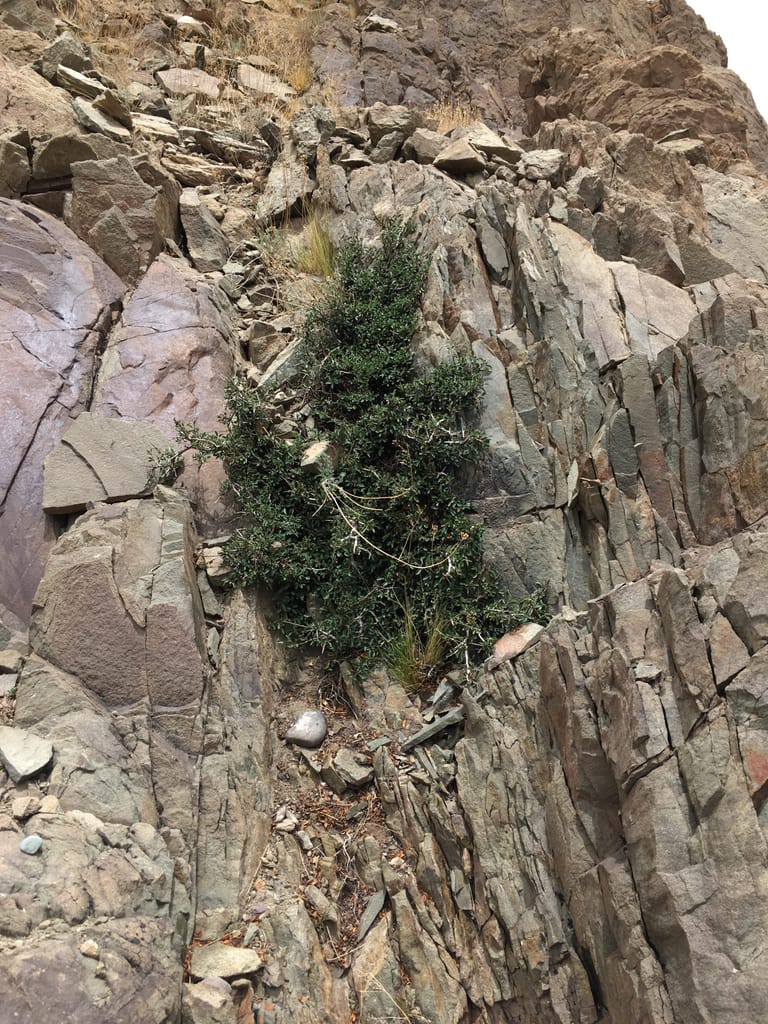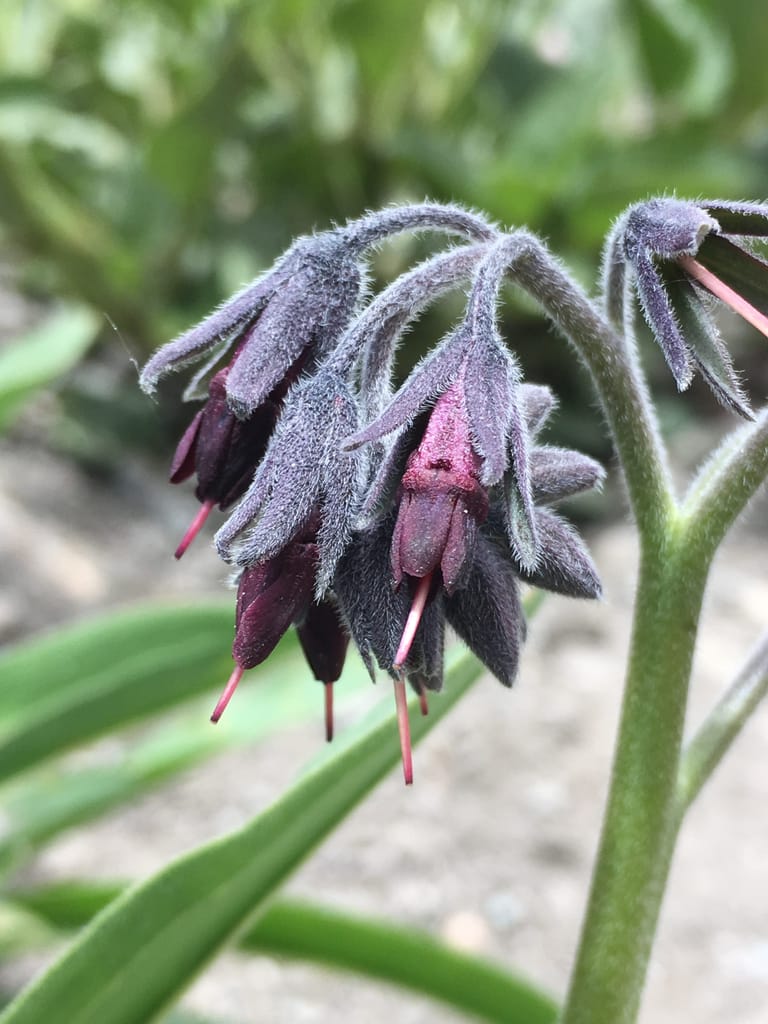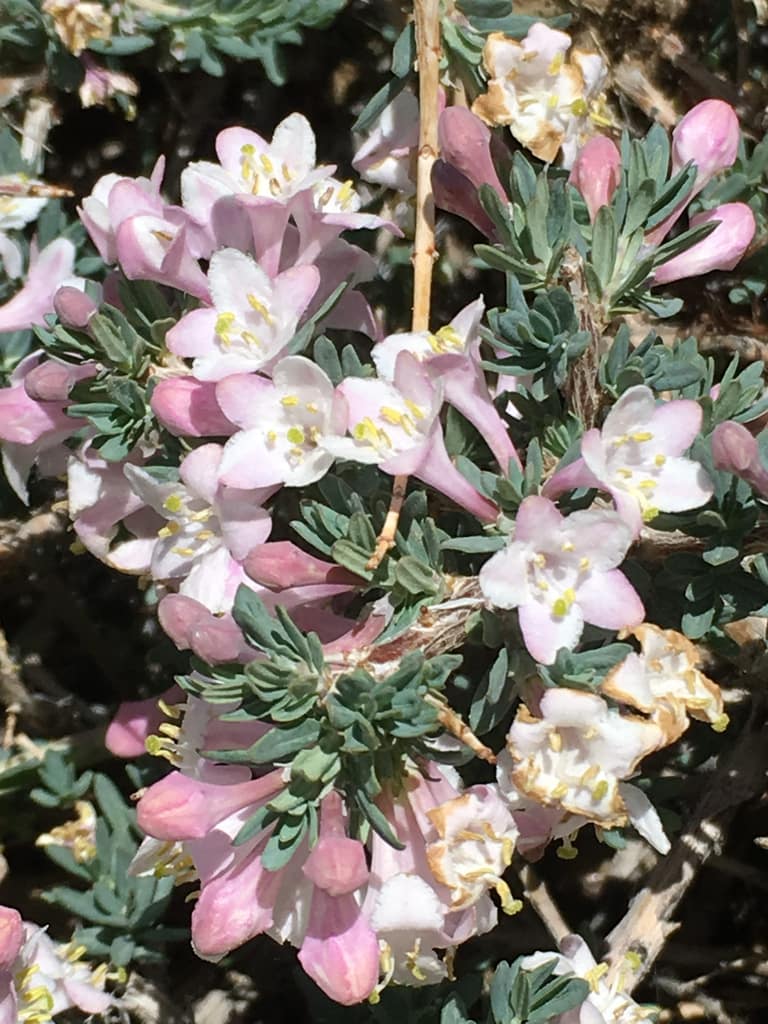Jump to The School, Plant Photos
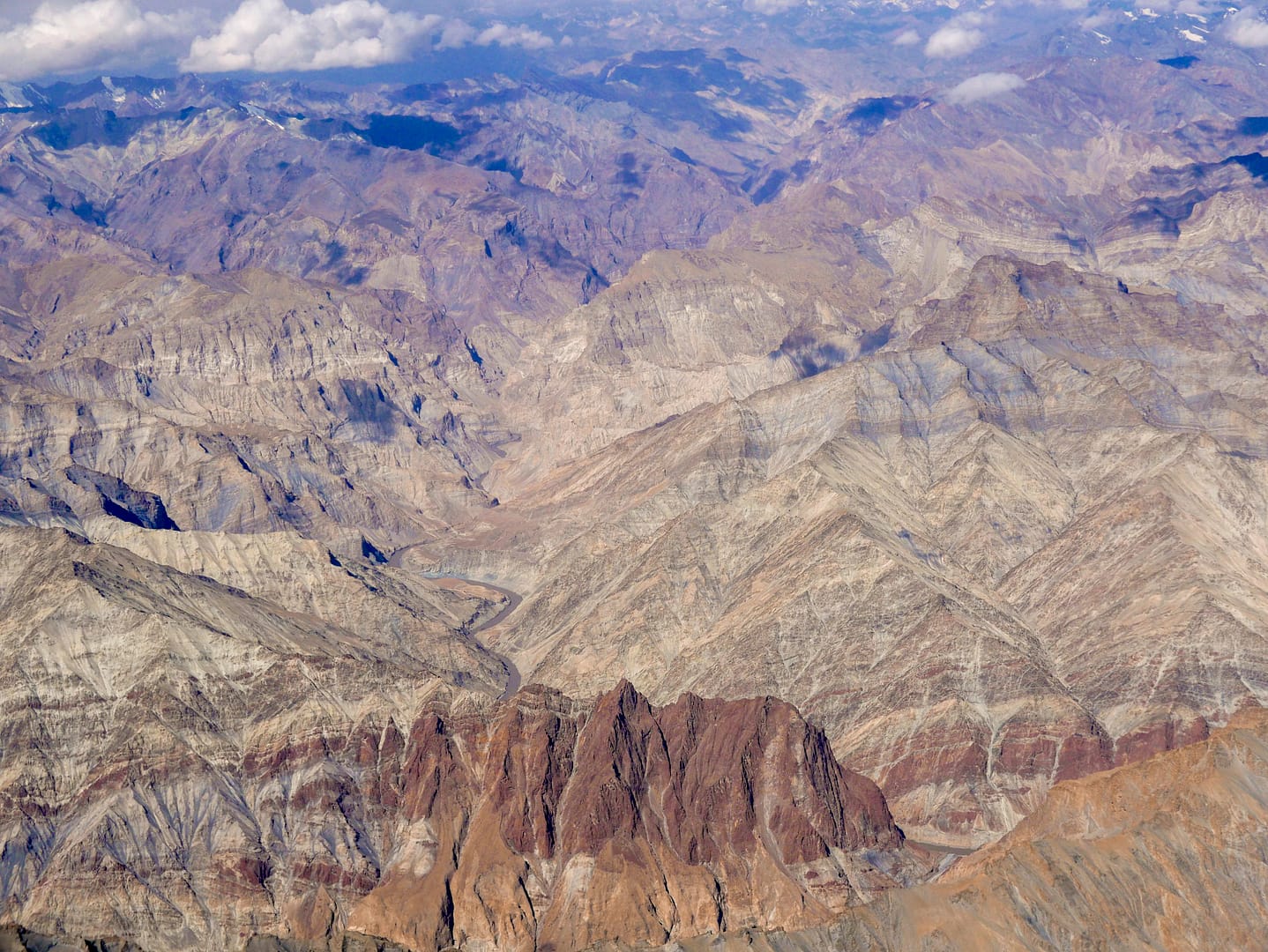
Ladakh is a Tibetan Buddhist culture that sits between Kashmir and Tibet—one of a few remaining places where such traditional culture survives. High desert, at more than 10,500 feet, it has very different ecological conditions than Bhutan.
Related work: Supreme Court, Kingdom of Bhutan

The School
In 2018, I started working at the Druk White Lotus School (Druk Padma Karpo School) in Shey, Ladakh, outside the city of Leh. Ladakhi towns and villages are set adjacent to waterways, and irrigation is critical for agriculture. The school is located out of the river oasis on a broad, rock-strewn plain (so to not build on arable land) and gets about 4 inches of rain a year.
Laid out in a Buddhist mandala, the school has won numerous awards for its sustainably oriented design. Earlier landscape volunteers from the University of Greenwich, UK developed a play area, started a nursery, and laid out the first plantings. My principal goal in 2018 was to develop a long term planting strategy for the school, a strategy much less dependent on irrigation. Between the melting of the glaciers, reduction in rain and snowfall, and the general desert conditions, there is a declining amount of water available in Ladakh generally, and at the school. As part of the new planting strategy, we are also working on improving the existing irrigation system, and designing for and managing and reusing grey water in a more active way.
You can read more about the school, and the Dragon Garden, at dwls.org.
Current plantings at the school require regular irrigation. We are hoping that future plantings, as we fill in the school’s master plan, will be much less dependent on irrigation, or not need irrigation at all. As there aren’t really nurseries in Ladkah and or any desert plants in the horticultural trade in nearby states, part of the project was to go in the field and look for plants that might be appropriate to use at the school. Besides needing to have a pretty high aesthetic value, and be ecologically adapted to our site, the plants need be transplantable and/or easily propagatable. I also researched the edible, cultural and spiritual value of the plants in an effort to maintain traditional cultural links and provide educational opportunities for the teachers and students.
We need expert horticultural advice on propagation of desert plants and potential nursery or educational collaborators, so if you have suggestions or resources, please contact us.
Plant Photos
During my visit, I explored the surrounding topography collecting notes and images of the plant life in the region. These examples illustrate the vibrancy and tenacity of the local flora despite Ladakh’s dry and mountainous climate. Click on a thumbnail to see the plant in greater detail.
Juniperus species Capparis spinosa Rosa webbiana Inula obtusifolia Clematis tangutica Perovskia abrotanoides Menitska tibetica Peganum harmala Rhamnus prostrata Physochlaina praealta Silene moorcroftiana Nepeta floccosa Iris lactea






